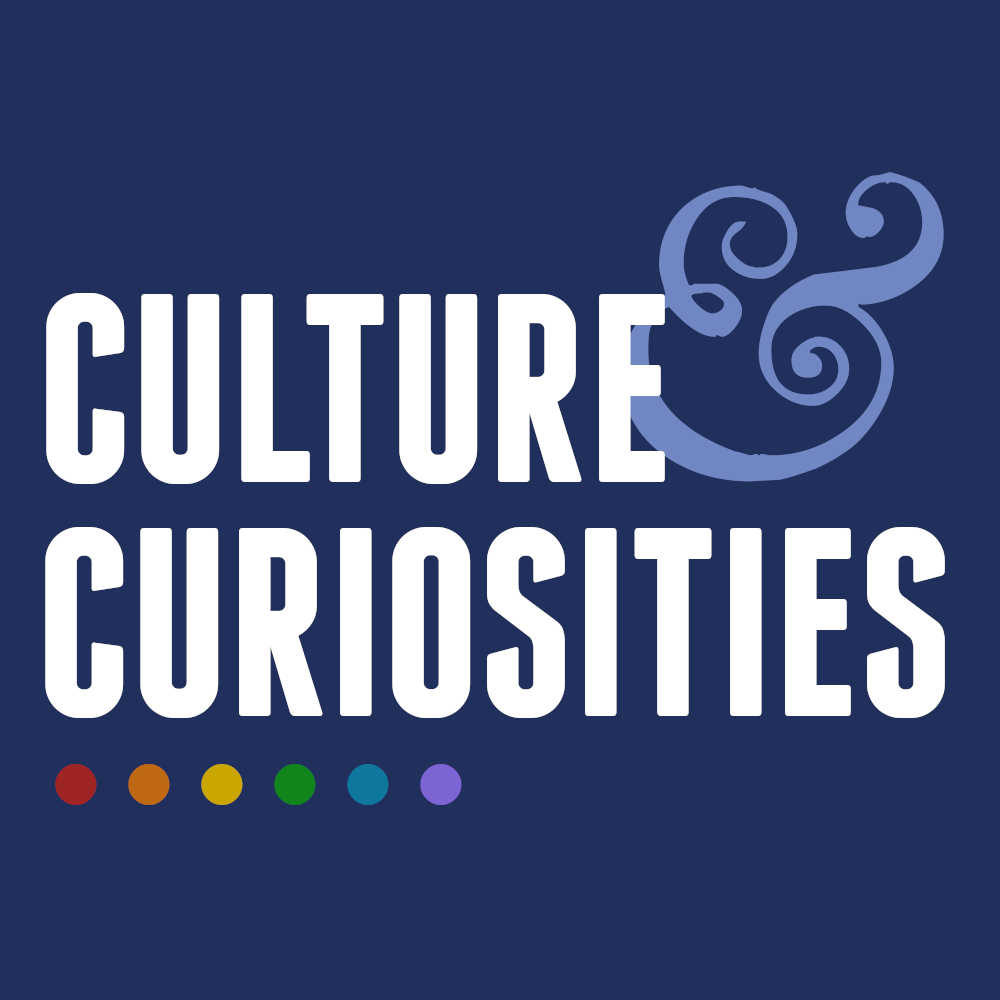|
Earlier this week, Anselmo Quemot wrote about Lovecraft, anthropology, and primitivism on his blog, and I responded. Yesterday, Quemot posted a thoughtful response to my post, and today I return the favor with my own reply. I strongly recommend reading the preceding discussion before reading my response posted below. Thank you for your comments. To briefly address anthropology and its discontents, I think that this boils down, in essence, to one’s political temperament. It is a matter of subjective opinion what constitutes the “good,” whether the knowledge brought back to the West is worth the risks to native peoples, and what would happen if we did not have that knowledge. That said, the anthropology of today is very different from that of 40 years ago, and there is plenty of anthropology now being done within Western societies, as well as a much greater awareness of the limits of “objectivity” and the differences between the emic and the etic. So everyone can now be oppressed together! Your defense of Beal is, I’m sure, quite right, and I will fully admit that it has been a decade since Beal’s book, and you are much more familiar with its details than I. However, if I recall correctly, Beal devotes almost no discussion to the monsters of Greco-Roman or Arabian mythology, who were Lovecraft’s models, more so than the Near Eastern chaos monsters that are the objects of Beal’s special interest. It is perhaps unfair of me to lump together all the Near Eastern mythologies under the general category of biblical, but it was my impression that Religion and Its Monsters took interest in Babylonian, Ugaritic and other mythologies primarily for their aid in elucidating chaogony themes in the Hebrew Bible, which, for better or worse, is the presiding work in Beal’s text. If my memory is at fault here, I will of course feel bad about it later. All of this is interesting enough, but it plays little role in understanding Lovecraft, who would not have had exposure to much of this material. The question for me boils down to the question of intention: Lovecraft’s monsters are artificial creations. They draw upon religious motifs, primarily Greco-Roman but also those of Revelation, but I don’t see this as a meditation on the role of deity. Lovecraft did not intend his monsters to actually function as gods, chaos or otherwise, but rather as embodiments of the material universe. (And yes, Lovecraft called the Old Ones “beyond good and evil” to emphasize that they exist beyond human subjectivity—which is something I recall that Beal noted.) As I read Lovecraft, the monsters are not “religion” so much as science, their awe and terror less a manifestation of religious awe than the awe of humanity before the grandeur of nature. This may seem like a distinction without a difference for those who hold God and nature to be inseparable, but absent God it makes a difference. This returns us to the question of whether a text has meaning independent of its author’s intention; certainly a text can have such meanings, but we must recognize these as interpretations outside observers are interpreting into the text, not inherent qualities of the text itself. As I mentioned I my earlier comments, I don’t feel that “chaos gods” adequately describes the Cthulhu Mythos, whose beings I view as representatives of a nonhuman order that only appears to be chaotic relative to humans. It is difficult to imagine Lovecraft’s Great Race, civilized and cultured as they are, as chaos monsters. Mythology’s chaos monsters rise up to destroy order and return the world to its prehistoric, chaotic state. Lovecraft’s monsters have no interest in doing that; they want instead to build something new that happens to have nothing to do with people. This is why I disagree with Beal that Lovecraft’s monsters are “threats” to the “cosmological order.” They are not threats to it so much as the very cosmological order itself. Azathoth, the “nuclear chaos” demon sultan at the center of creation, proves this point, with his As per your discussion of Lovecraft’s of man’s essentially bestial state, in the Lovecraftian cosmos (and this is only true within his fictional universe, of course), the non-human, the random, and the alien are the very building blocks of the cosmos. Humanity and civilization are “recent and transient indeed.” When you and Beal talk about chaos as creation, it evokes for me the Orphic theology about the role of chaos in generating the primal world: “Truly, above all I disclosed the stern inevitability of ancient Chaos, and Time, who in his boundless coils, produced Aether, and the twofold, beautiful, and noble Eros, whom the younger men call Phanes, celebrated parent of eternal Night, because he himself first manifested” (Orphic Argonautica, my trans.). Chaogony can therefore be creative in setting the stage for new growth; but this is not the goal of the Old Ones. So when discussing Lovecraft we have to define terms: Are we discussing the Mythos within the context of the stories, or the Mythos as a discourse outside the stories conversing with the reader’s own assumptions and ideas? It is only in the latter that the Mythos begins to conform to Beal’s ideas of chaos monsters and chaogony, and then only partially. Within the stories, what the reader (and the characters) perceive as chaos is actually an ineffable order produced by the random pulsation of Azathoth, creating eternal laws of physics that our small, mammalian minds cannot quite grasp except through the distortion of religion or the abstraction of science. Note that (so far as I can recall) Beal does not discuss Azathoth, which is odd since he would seem to be the very definition of creation from chaos, though it is perhaps understandable since Azathoth does not fit the image of a chaos monster since he is clearly material physics in action. And here again is where I do have to fault Beal for more or less cherry-picking Lovecraft stories to meet his needs. We can’t pick and choose which Mythos stories we want to include or exclude based on how closely they conform to a theory. If, as Beal does, we look primarily at “The Call of Cthulhu” and “The Dunwich Horror,” we see more or less clear examples of chaos monsters and clearly religious iconography. This is because these were written explicitly as monster stories, and the "eruption of chaos" is an inherent trait of every monster horror story, part of its structure. (Noel Carroll writes about the theme in Philosophy of Horror.) But if we instead select At the Mountains of Madness and The Shadow Out of Time, not explicitly monster stories like the earlier tales but closer to world-building science fiction, we cannot so clearly label the aliens as chaos monsters. But by what criteria do we include some and exclude other Mythos stories? How do we account for Lovecraft's own changing conception of the Mythos through time? The aliens of the later stories are nearly human in all but body, scientists studying a grand cosmic order, of which even Cthulhu is a constructive, if antagonistic, part:
When the beasts of Revelation rise up, it is merely to destroy; when the Mythos beings return, it is to reclaim and rebuild. Chaos is relative to the observer, which was Lovecraft's whole point: The universe operates by physical laws that are completely independent of human observers, and which don't care about us.
1 Comment
3/24/2012 06:42:05 pm
I think you've probably hit the nail on the head by saying the answers are relative to the observer, as that will determine what in Lovecraft is at stake. But i won't jump back in right now by saying the waters will be muddied if terms like "ineffable" come into play, as that might (inadvertently) trigger another debate about negative theology!
Reply
Your comment will be posted after it is approved.
Leave a Reply. |
AuthorI am an author and researcher focusing on pop culture, science, and history. Bylines: New Republic, Esquire, Slate, etc. There's more about me in the About Jason tab. Newsletters
Enter your email below to subscribe to my newsletter for updates on my latest projects, blog posts, and activities, and subscribe to Culture & Curiosities, my Substack newsletter.
Categories
All
Terms & ConditionsPlease read all applicable terms and conditions before posting a comment on this blog. Posting a comment constitutes your agreement to abide by the terms and conditions linked herein.
Archives
July 2024
|
- Home
- Blog
- Books
-
Articles
-
Newsletter
>
- Television Reviews >
- Book Reviews
- Galleries >
- Videos
-
Collection: Ancient Alien Fraud
>
- Chariots of the Gods at 50
- Secret History of Ancient Astronauts
- Of Atlantis and Aliens
- Aliens and Ancient Texts
- Profiles in Ancient Astronautics >
- Blunders in the Sky
- The Case of the False Quotes
- Alternative Authors' Quote Fraud
- David Childress & the Aliens
- Faking Ancient Art in Uzbekistan
- Intimations of Persecution
- Zecharia Sitchin's World
- Jesus' Alien Ancestors?
- Extraterrestrial Evolution?
- Collection: Skeptic Magazine >
- Collection: Ancient History >
- Collection: The Lovecraft Legacy >
- Collection: UFOs >
- Scholomance: The Devil's School
- Prehistory of Chupacabra
- The Templars, the Holy Grail, & Henry Sinclair
- Magicians of the Gods Review
- The Curse of the Pharaohs
- The Antediluvian Pyramid Myth
- Whitewashing American Prehistory
- James Dean's Cursed Porsche
-
Newsletter
>
-
The Library
-
Ancient Mysteries
>
-
Ancient Texts
>
- Mesopotamian Texts >
-
Egyptian Texts
>
- The Shipwrecked Sailor
- Dream Stela of Thutmose IV
- The Papyrus of Ani
- Classical Accounts of the Pyramids
- Inventory Stela
- Manetho
- Eratosthenes' King List
- The Story of Setna
- Leon of Pella
- Diodorus on Egyptian History
- On Isis and Osiris
- Famine Stela
- Old Egyptian Chronicle
- The Book of Sothis
- Horapollo
- Al-Maqrizi's King List
- Teshub and the Dragon
- Hermetica >
- Hesiod's Theogony
- Periplus of Hanno
- Ctesias' Indica
- Sanchuniathon
- Sima Qian
- Syncellus's Enoch Fragments
- The Book of Enoch
- Slavonic Enoch
- Sepher Yetzirah
- Tacitus' Germania
- De Dea Syria
- Aelian's Various Histories
- Julius Africanus' Chronography
- Eusebius' Chronicle
- Chinese Accounts of Rome
- Ancient Chinese Automaton
- The Orphic Argonautica
- Fragments of Panodorus
- Annianus on the Watchers
- The Watchers and Antediluvian Wisdom
-
Medieval Texts
>
- Medieval Legends of Ancient Egypt >
- The Hunt for Noah's Ark
- Isidore of Seville
- Book of Liang: Fusang
- Agobard on Magonia
- Book of Thousands
- Voyage of Saint Brendan
- Power of Art and of Nature
- Travels of Sir John Mandeville
- Yazidi Revelation and Black Book
- Al-Biruni on the Great Flood
- Voyage of the Zeno Brothers
- The Kensington Runestone (Hoax)
- Islamic Discovery of America
- The Aztec Creation Myth
-
Lost Civilizations
>
-
Atlantis
>
- Plato's Atlantis Dialogues >
- Fragments on Atlantis
- Panchaea: The Other Atlantis
- Eumalos on Atlantis (Hoax)
- Gómara on Atlantis
- Sardinia and Atlantis
- Santorini and Atlantis
- The Mound Builders and Atlantis
- Donnelly's Atlantis
- Atlantis in Morocco
- Atlantis and the Sea Peoples
- W. Scott-Elliot >
- The Lost Atlantis
- Atlantis in Africa
- How I Found Atlantis (Hoax)
- Termier on Atlantis
- The Critias and Minoan Crete
- Rebuttal to Termier
- Further Responses to Termier
- Flinders Petrie on Atlantis
- Amazing New Light (Hoax)
- Lost Cities >
- OOPARTs
- Oronteus Finaeus Antarctica Map
- Caucasians in Panama
- Jefferson's Excavation
- Fictitious Discoveries in America
- Against Diffusionism
- Tunnels Under Peru
- The Parahyba Inscription (Hoax)
- Mound Builders
- Gunung Padang
- Tales of Enchanted Islands
- The 1907 Ancient World Map Hoax
- The 1909 Grand Canyon Hoax
- The Interglacial Period
- Solving Oak Island
-
Atlantis
>
- Religious Conspiracies >
-
Giants in the Earth
>
-
Fossil Origins of Myths
>
- Fossil Teeth and Bones of Elephants
- Fossil Elephants
- Fossil Bones of Teutobochus
- Fossil Mammoths and Giants
- Giants' Bones Dug Out of the Earth
- Fossils and the Supernatural
- Fossils, Myth, and Pseudo-History
- Man During the Stone Age
- Fossil Bones and Giants
- Mastodon, Mammoth, and Man
- American Elephant Myths
- The Mammoth and the Flood
- Fossils and Myth
- Fossil Origin of the Cyclops
- History of Paleontology
- Fragments on Giants
- Manichaean Book of Giants
- Geoffrey on British Giants
- Alfonso X's Hermetic History of Giants
- Boccaccio and the Fossil 'Giant'
- Book of Howth
- Purchas His Pilgrimage
- Edmond Temple's 1827 Giant Investigation
- The Giants of Sardinia
- Giants and the Sons of God
- The Magnetism of Evil
- Tertiary Giants
- Smithsonian Giant Reports
- Early American Giants
- The Giant of Coahuila
- Jewish Encyclopedia on Giants
- Index of Giants
- Newspaper Accounts of Giants
- Lanier's A Book of Giants
-
Fossil Origins of Myths
>
-
Science and History
>
- Halley on Noah's Comet
- The Newport Tower
- Iron: The Stone from Heaven
- Ararat and the Ark
- Pyramid Facts and Fancies
- Argonauts before Homer
- The Deluge
- Crown Prince Rudolf on the Pyramids
- Old Mythology in New Apparel
- Blavatsky on Dinosaurs
- Teddy Roosevelt on Bigfoot
- Devil Worship in France
- Maspero's Review of Akhbar al-zaman
- The Holy Grail as Lucifer's Crown Jewel
- The Mutinous Sea
- The Rock Wall of Rockwall
- Fabulous Zoology
- The Origins of Talos
- Mexican Mythology
- Chinese Pyramids
- Maqrizi's Names of the Pharaohs
-
Extreme History
>
- Roman Empire Hoax
- American Antiquities
- American Cataclysms
- England, the Remnant of Judah
- Historical Chronology of the Mexicans
- Maspero on the Predynastic Sphinx
- Vestiges of the Mayas
- Ragnarok: The Age of Fire and Gravel
- Origins of the Egyptian People
- The Secret Doctrine >
- Phoenicians in America
- The Electric Ark
- Traces of European Influence
- Prince Henry Sinclair
- Pyramid Prophecies
- Templars of Ancient Mexico
- Chronology and the "Riddle of the Sphinx"
- The Faith of Ancient Egypt
- Remarkable Discoveries Within the Sphinx (Hoax)
- Spirit of the Hour in Archaeology
- Book of the Damned
- Great Pyramid As Noah's Ark
- Richard Shaver's Proofs
-
Ancient Texts
>
-
Alien Encounters
>
-
US Government Ancient Astronaut Files
>
- Fortean Society and Columbus
- Inquiry into Shaver and Palmer
- The Skyfort Document
- Whirling Wheels
- Denver Ancient Astronaut Lecture
- Soviet Search for Lemuria
- Visitors from Outer Space
- Unidentified Flying Objects (Abstract)
- "Flying Saucers"? They're a Myth
- UFO Hypothesis Survival Questions
- Air Force Academy UFO Textbook
- The Condon Report on Ancient Astronauts
- Atlantis Discovery Telegrams
- Ancient Astronaut Society Telegram
- Noah's Ark Cables
- The Von Daniken Letter
- CIA Psychic Probe of Ancient Mars
- Scott Wolter Lawsuit
- UFOs in Ancient China
- CIA Report on Noah's Ark
- CIA Noah's Ark Memos
- Congressional Ancient Aliens Testimony
- Ancient Astronaut and Nibiru Email
- Congressional Ancient Mars Hearing
- House UFO Hearing
- Ancient Extraterrestrials >
- A Message from Mars
- Saucer Mystery Solved?
- Orville Wright on UFOs
- Interdimensional Flying Saucers
- Poltergeist UFOs
- Flying Saucers Are Real
- Report on UFOs
-
US Government Ancient Astronaut Files
>
-
The Supernatural
>
- The Devils of Loudun
- Sublime and Beautiful
- Voltaire on Vampires
- Demonology and Witchcraft
- Thaumaturgia
- Bulgarian Vampires
- Religion and Evolution
- Transylvanian Superstitions
- Defining a Zombie
- Dread of the Supernatural
- Vampires
- Werewolves and Vampires and Ghouls
- Science and Fairy Stories
- The Cursed Car
-
Classic Fiction
>
- Lucian's True History
- Some Words with a Mummy
- The Coming Race
- King Solomon's Mines
- An Inhabitant of Carcosa
- The Xipéhuz
- Lot No. 249
- The Novel of the Black Seal
- The Island of Doctor Moreau
- Pharaoh's Curse
- Edison's Conquest of Mars
- The Lost Continent
- Count Magnus
- The Mysterious Stranger
- The Wendigo
- Sredni Vashtar
- The Lost World
- The Red One
- H. P. Lovecraft >
- The Skeptical Poltergeist
- The Corpse on the Grating
- The Second Satellite
- Queen of the Black Coast
- A Martian Odyssey
- Classic Genre Movies
-
Miscellaneous Documents
>
- The Balloon-Hoax
- A Problem in Greek Ethics
- The Migration of Symbols
- The Gospel of Intensity
- De Profundis
- The Life and Death of Crown Prince Rudolf
- The Bathtub Hoax
- Crown Prince Rudolf's Letters
- Position of Viking Women
- Employment of Homosexuals
- James Dean's Scrapbook
- James Dean's Love Letters
- The Amazing James Dean Hoax!
- James Dean, The Human Ashtray
- Free Classic Pseudohistory eBooks
-
Ancient Mysteries
>
- About Jason
- Search
© 2010-2024 Jason Colavito. All rights reserved.






 RSS Feed
RSS Feed
